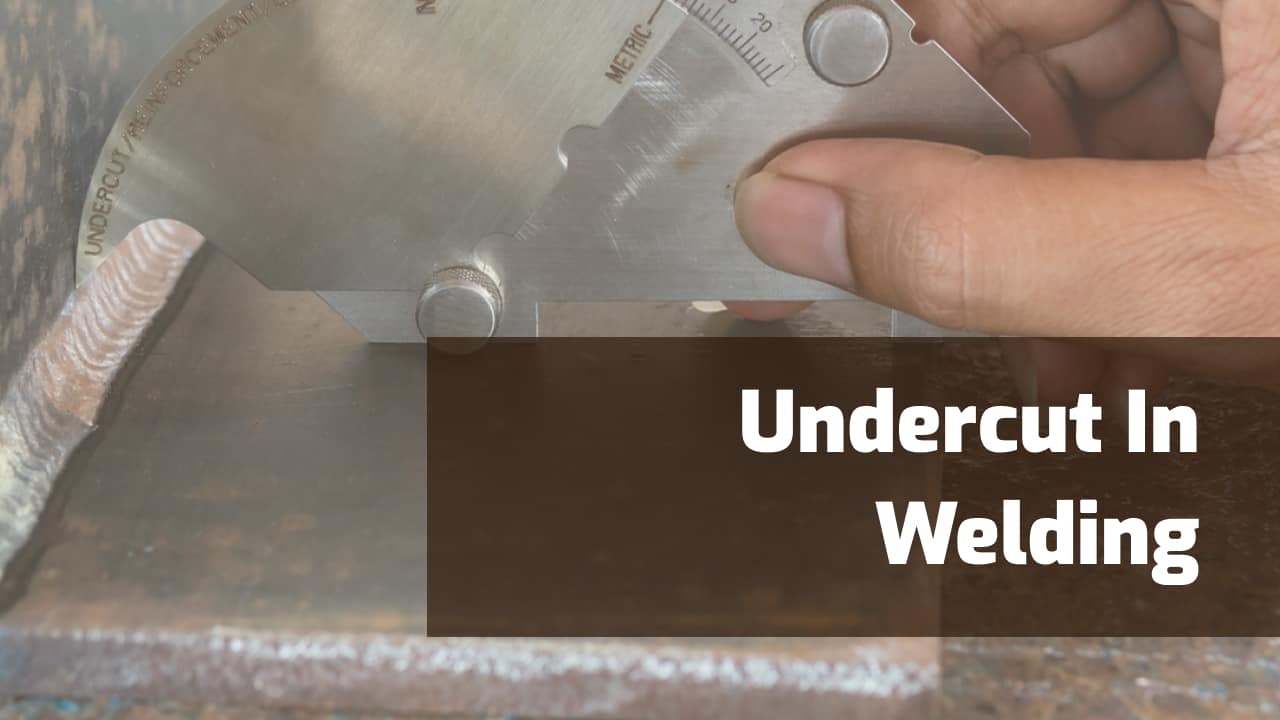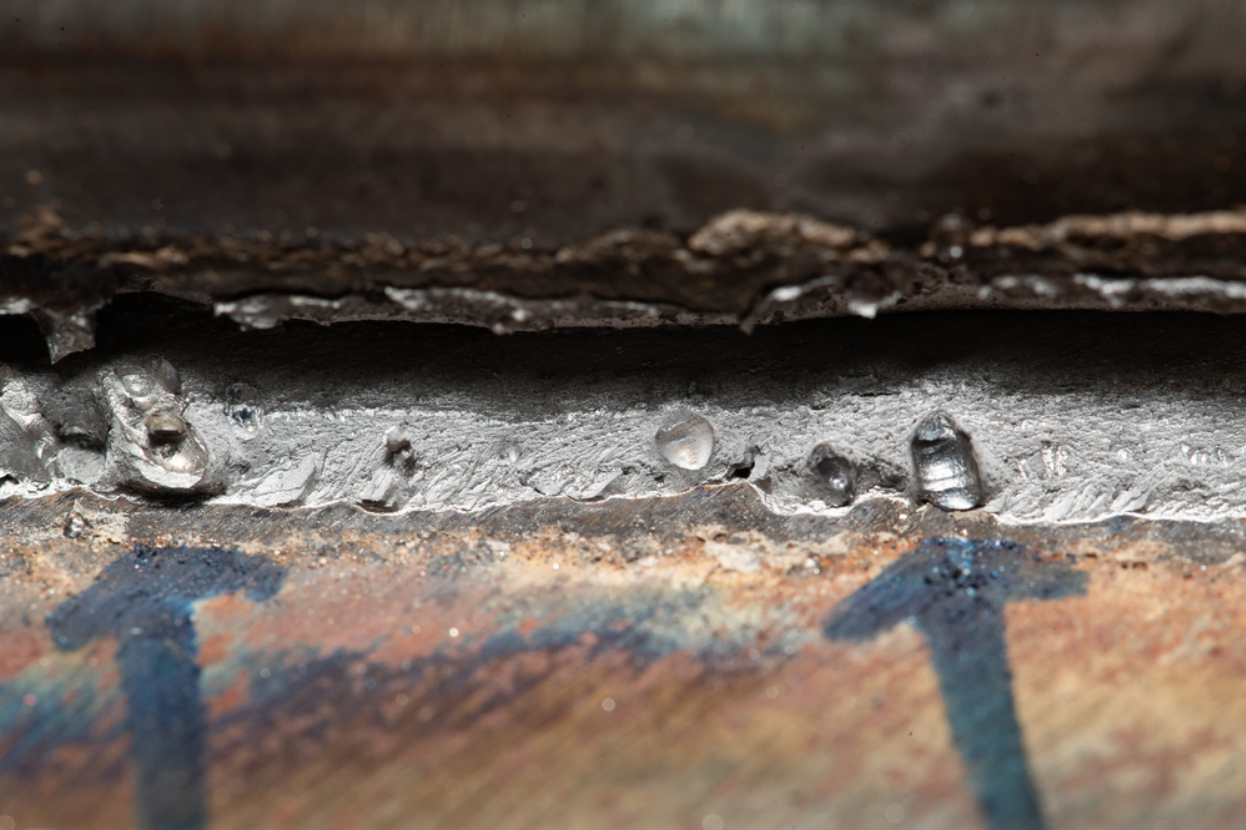Your Complete Manual to Preventing Weld Undercut Like a Pro
Your Complete Manual to Preventing Weld Undercut Like a Pro
Blog Article
Important Tips for Welders: Stopping Undercut Welding and Ensuring Stronger Weld Joints
In the world of welding, achieving strong and resilient weld joints is the keystone of generating premium work. One common difficulty that welders frequently run into is undercut welding, which can jeopardize the honesty of the weld joint. By recognizing the variables that add to undercutting and carrying out the right techniques and precautions, welders can effectively stop this problem and make sure the longevity and strength of their welds. Let's discover some vital pointers that can assist welders browse this obstacle and raise the quality of their welding tasks.

Recognizing Undercut Welding
Undercut welding is a typical welding defect that happens when the weld metal stops working to properly fill up the groove and causes a groove-like anxiety along the weld grain. This defect deteriorates the weld joint, making it susceptible to fracturing and failure under anxiety. Damaging can be triggered by numerous factors, including too much welding existing, high welding speed, incorrect electrode angle, wrong electrode size, and inadequate welding technique.
One of the main factors for undercut welding is an inequality between the welding current and the welding speed. If the welding current is too expensive or the welding rate is too quick, the weld steel might not adequately fill up the groove, causing damaging. In addition, using an electrode that is as well big can lead to a comparable end result, as the excess metal can not properly flow right into the groove.
To stop undercut welding, welders must guarantee they are using the appropriate welding parameters, preserve a suitable electrode angle, choose the proper electrode dimension, and technique correct welding strategies. By addressing these variables, welders can lessen the threat of damaging and develop more powerful, extra dependable weld joints.
Correct Welding Technique
Reliable welding strategy plays a critical duty in ensuring the quality and stability of weld joints. One essential element of correct welding technique is preserving the right angle and distance in between the welding weapon and the workpiece.
Additionally, a consistent and stable hand motion is essential for producing strong and sturdy weld joints. Welders should aim for smooth, uniform movements to make certain also circulation of the weld material. Appropriate adjustment of the welding weapon and filler product is also crucial to attaining optimal infiltration and fusion.
Furthermore, managing the heat input and choosing the proper welding parameters based on the product being bonded are important elements in achieving high-grade welds - Preventing weld undercut. Welders must follow the recommended settings provided by welding treatment specifications and change them as needed based upon the certain needs of the project. By grasping appropriate welding methods, welders can substantially enhance the strength and reliability of their weld joints
Picking the Right Electrode
Maintaining the correct angle and distance in between the welding gun and the workpiece is basic when taking into consideration the importance of picking the appropriate electrode in welding applications. The option of electrode plays an important duty in identifying the high quality and toughness of the weld joint. Electrodes are available in numerous types, each made for certain objectives and materials.
Firstly, choosing the suitable electrode diameter is crucial. Thinner electrodes appropriate for welding slim products, while thicker electrodes are much better for thicker materials and greater heat applications. Matching the electrode diameter to the density of the workpiece helps accomplish a well balanced weld.
Second of all, recognizing the product make-up of the electrode is important. Various electrodes are developed for welding details materials like steel, stainless steel, light weight aluminum, or cast iron. Using the right electrode material ensures good fusion and minimizes the danger of defects in the weld.
Last but not least, considering the welding position and method is crucial when picking the electrode type. Particular electrodes are much better suited for upright or above welding settings, while others function well for level or horizontal placements. Picking the best electrode based on the welding technique improves the general weld high quality and stability.
Preparing the Base Steel
To ensure a successful welding procedure, what first actions should be taken when preparing the base steel for welding? Correctly preparing the base metal is critical for accomplishing solid and sturdy weld joints. The primary step in preparing the base metal is to cleanse it thoroughly to eliminate any type of pollutants such as rust, paint, dust, or oil. This can be done using a wire chemical, grinder, or brush solvents. In addition, any kind of existing weld material or deposit from previous welding ought to be eliminated to make sure a tidy surface for the new weld.

Performing Post-Weld Inspections

After carrying out these evaluations, welders should compare the outcomes against sector standards and project demands to ensure that the weld joint satisfies all needed standards. Any kind of inconsistencies or inadequacies uncovered during the post-weld evaluation should be promptly addressed through suitable corrective steps to assure the weld's integrity. By carefully executing post-weld evaluations and without delay dealing with site any type of issues, welders can support the top quality and integrity of their job, ultimately adding to the safety and security and long life of the bonded frameworks.
Final Thought

To conclude, stopping undercut welding and making certain more powerful weld joints call for a combination of correct welding strategy, selecting the ideal electrode, preparing the base metal correctly, and performing post-weld assessments. By understanding the sources of undercut welding and implementing the needed precautions, welders can create top quality weld joints that fulfill industry standards and ensure the structural stability of the bonded parts.
Undercut welding is an usual welding issue that takes place when the weld metal fails to correctly fill up the groove and results in a groove-like depression along the weld bead (Preventing weld undercut). Damaging can check it out be created by Continue various variables, including too much welding current, high welding rate, incorrect electrode angle, incorrect electrode dimension, and inadequate welding technique
One of the main factors for undercut welding is an inequality in between the welding current and the welding speed. If the welding current is as well high or the welding speed is as well quickly, the weld metal may not sufficiently fill the groove, leading to undercutting.Preserving the right angle and distance in between the welding gun and the workpiece is essential when considering the importance of choosing the best electrode in welding applications.
Report this page